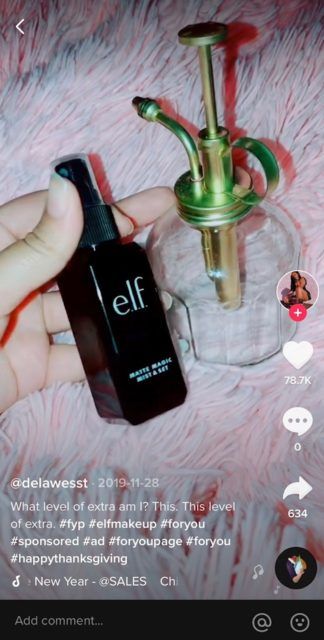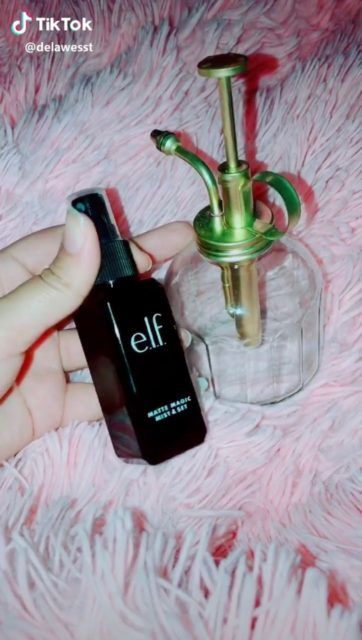Brands and influencers could unknowingly be violating the FTC's endorsement rules by using TikTok to promote paid posts and sponsored content without including the necessary disclosures. TikTok offers native direct download and social sharing tools that enable users to share TikTok videos on other social media platforms without the caption and hashtags from the original video description, which may include disclosures that were included as required by the FTC to identify paid advertising.
For example, this is a screenshot from an influencer's TikTok video when viewed directly on the TikTok mobile or web app:

And here is a screenshot from the same video after direct download from the TikTok app. When posted to another social media platform, it will not have the #sponsored and #ad hashtags, which were removed via TikTok's direct download tool:

While TikTok offers sharing options that keep the original captions intact, the direct video downloads and social platform sharing features, which effectively remove the caption and hashtags from the video description, are the most visually cohesive and popular ways to share such videos to other platforms. By putting a required FTC disclosure only in the caption of a TikTok video, the brands and influencers who have popularized the platform may be exposing themselves to liability. Brands that repurpose their influencer's sponsored TikTok content for marketing on other social media platforms may be at particular risk if they do not notice the removal of such disclosures from such content when it is downloaded or shared from TikTok.
When a user downloads a video, or shares a video directly from TikTok to certain other social media platforms, the description of the video and any hashtags do not migrate with it, including any disclosures that the uploader may have added to comply with the FTC's endorsement guidelines. Only the TikTok watermark and the creator's username remain.
The FTC has long required advertisers and those who endorse their products to clearly and conspicuously disclose material connections that may affect the weight or credibility of such endorsement. This requirement extends to brands and the influencers they engage to promote products or build awareness, and both brands and influencers may be liable for social media posts that fail to disclose the connection. Most viewers are accustomed to the typical #sponsored or #ad that accompany posts by influencers, big and small. In the case of TikTok, influencers often place these disclosures in the video description and nowhere else, so if a user downloads the video and uploads it to another social media platform, or shares it directly from TikTok to such other social media platform, the video may be stripped of any signifier that it is a paid promotion.
According to current FTC guidance, including disclosures solely in the description of the video on TikTok may already be insufficient to comply with the FTC's endorsement rules. The FTC has repeatedly emphasized that using a platform's built-in disclosure tools does not offer any guarantee that it is an effective way for influencers to disclose their material connections. There is no hard line rule; an independent evaluation is needed in most cases to determine if the material connection is truly being disclosed clearly and conspicuously given the context and overall impression of the influencer's post. And when an intentionally placed disclosure in the description of a TikTok video is removed, the risk of falling short of this standard is inevitably increased.
One risk mitigation strategy brands and influencers may employ is to use multiple disclosures. For example, in video endorsements, the FTC has advised that the best way to ensure users notice the disclosure is to include it in both the audio and the video. And not just in the description, but as a superimposed textual overlay embedded in the video, separate and apart from the text that TikTok or the applicable application enables users to add as a caption. Many users may not read the description section of a video based app, or the video description may be stripped from the video itself as in the case of shared TikTok videos. By including the disclosure in the audio of the video and/or as a textual overlay, the disclosure remains clear despite the caption being deleted via TikTok's sharing tools, mitigating the exposure to the brand or influencer.
While TikTok's popularity and explosive growth are due in part to its video sharing features, users, brands, and influencers should exercise caution when using such tools to ensure they are not inadvertently violating FTC endorsement rules. There is no one disclosure strategy that fits all circumstances, but users can mitigate the risk by including the necessary disclosures in multiple places, and not just in the video description.
Originally published by Sheppard Mullin, September 2020
The content of this article is intended to provide a general guide to the subject matter. Specialist advice should be sought about your specific circumstances.
